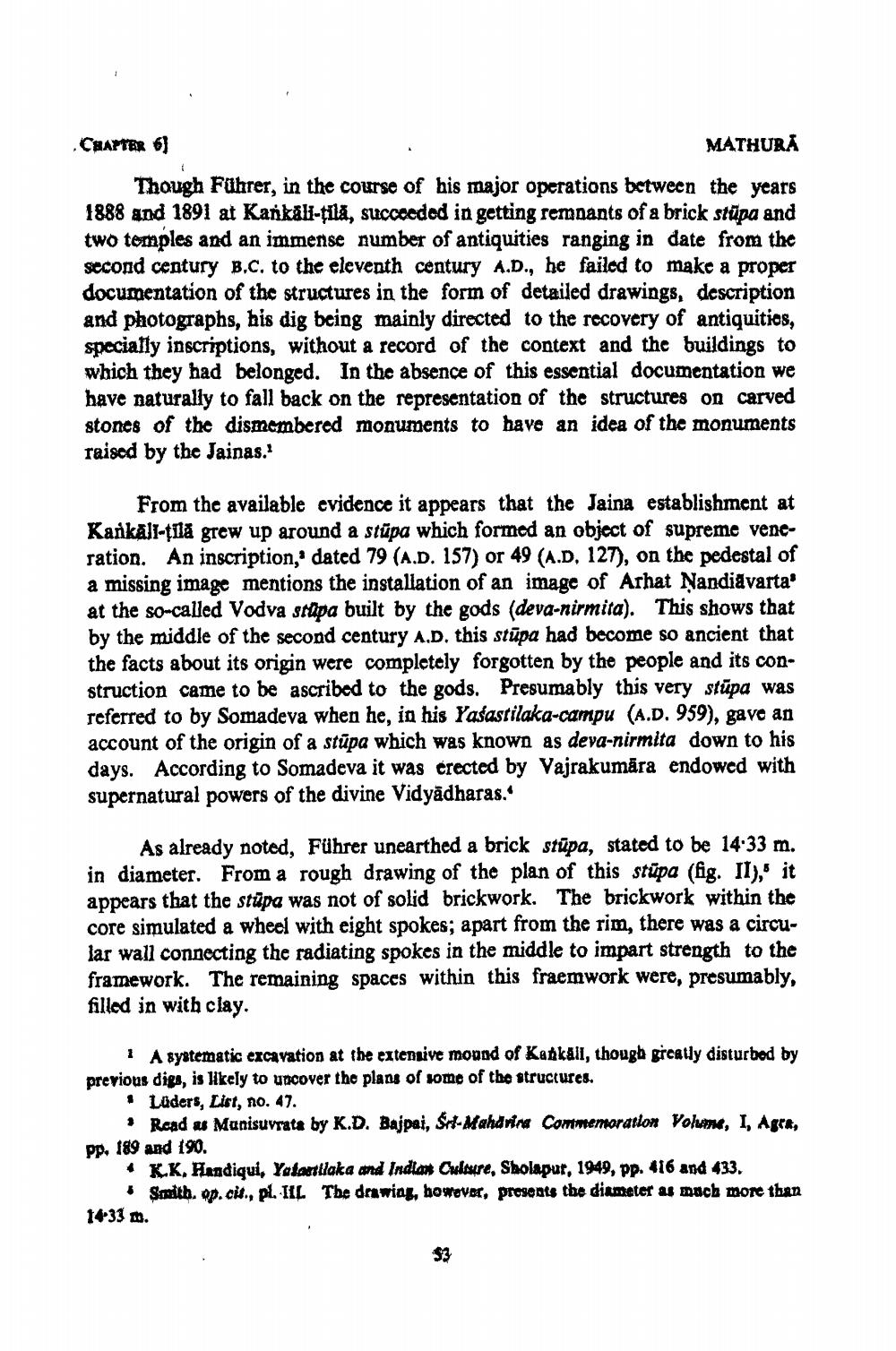________________
CHAPTER 6)
MATHURA
Though Führer, in the course of his major operations between the years 1888 and 1891 at Karkali-tila, succeeded in getting remnants of a brick stūpa and two temples and an immense number of antiquities ranging in date from the second century B.C. to the eleventh century A.D., he failed to make a proper documentation of the structures in the form of detailed drawings, description and photographs, his dig being mainly directed to the recovery of antiquitios, specially inscriptions, without a record of the context and the buildings to which they had belonged. In the absence of this essential documentation we have naturally to fall back on the representation of the structures on carved stones of the dismembered monuments to have an idea of the monuments raised by the Jainas.'
From the available evidence it appears that the Jaina establishment at Karkali-tilă grew up around a stupa which formed an object of supreme veneration. An inscription,' dated 79 (A.D. 157) or 49 (A.D. 127), on the pedestal of a missing image mentions the installation of an image of Arhat Nandiāvarta' at the so-called Vodva srüpa built by the gods (deva-nirmita). This shows that by the middle of the second century A.D. this stūpa had become so ancient that the facts about its origin were completely forgotten by the people and its construction came to be ascribed to the gods. Presumably this very stūpa was referred to by Somadeva when he, in his Yašastilaka-campu (A.D. 959), gave an account of the origin of a stūpa which was known as deva-nirmita down to his days. According to Somadeva it was erected by Vajrakumära endowed with supernatural powers of the divine Vidyadharas.
As already noted, Führer unearthed a brick stūpa, stated to be 14:33 m. in diameter. From a rough drawing of the plan of this stūpa (fig. II), it appears that the stupa was not of solid brickwork. The brickwork within the core simulated a wheel with eight spokes; apart from the rim, there was a circular wall connecting the radiating spokes in the middle to impart strength to the framework. The remaining spaces within this fraemwork were, presumably, filled in with clay.
1 A systematic excavation at the extensive moond of Katkall, though gically disturbed by previous diga, is likely to uncover the plans of some of the structures.
. Lüders, List, no. 47.
• Read as Manisuvrata by K.D. Bajpai, S-Mahdrina Commemoration Volume, I, Agra, pp. 189 and 190.
• KK, Handigui, Yadastlaka and Indlas Culare, Sholapur, 1949, pp. 416 and 433.
Smith, op.cit., pl. IIL The drawing, bowovor, prosents the diameter as much more than
14-33 m.




